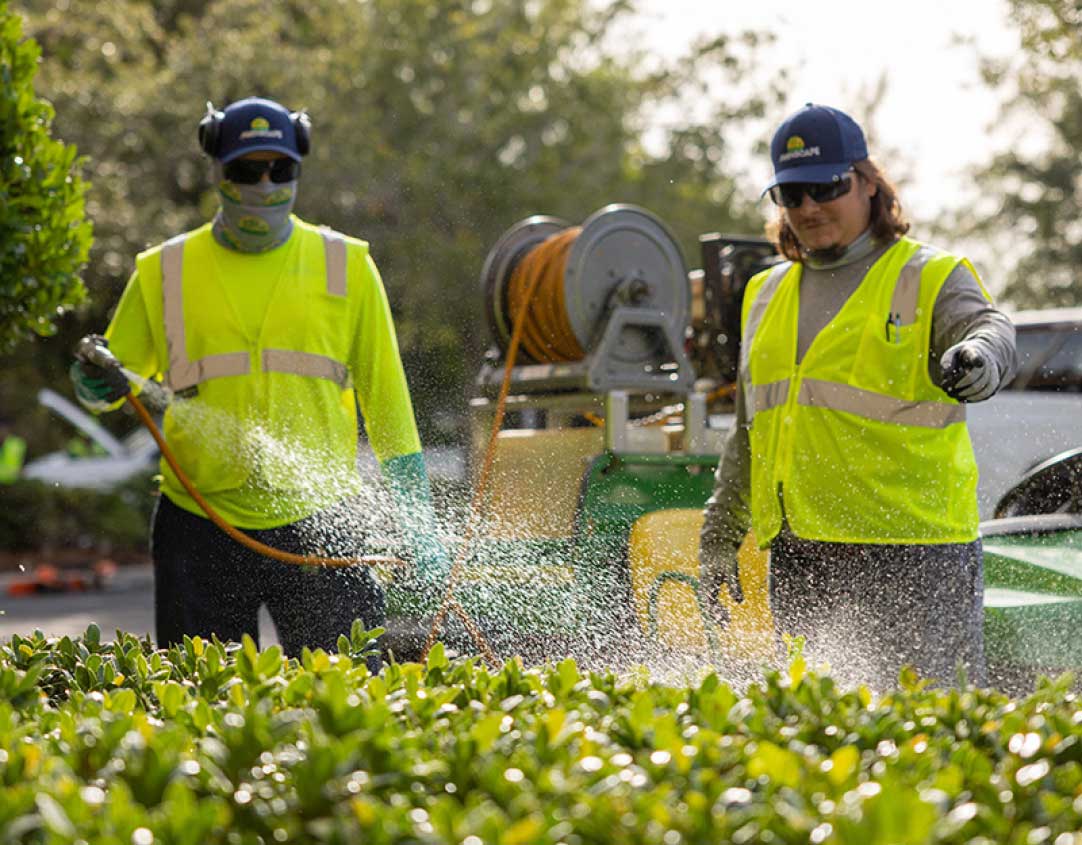When I started in Pest Management in 2005 with a different company, we were applying a slurry of insecticide, fungicide and fertilizer to all ornamental shrubs on a bi-monthly basis. This was NOT IPM, as there was no “target pest.” Rather, we were “spraying and praying” to stop or prevent pests and disease. This approach harmed beneficial insects, wasted product and increased the chance of chemical resistance by target pests.
IPM actually starts before plants are ever put into your landscape. This means selecting the right plant for the right location, choosing pest-resistant varieties, and keeping your plants healthy with the right irrigation and fertilization strategies. Theses strategies will reduce the need for future chemical applications.
No matter what, there are pests and diseases that may periodically impact our landscape. Detecting pests means regular scouting. These visual checks allow a pest issue to be addressed before it becomes an infestation or causes damage. Even if pests are found, trained IPM technicians will evaluate the damage threshold and look for beneficial insects (predatory bugs that feed on insect pests) and allow them a chance to control the issue. Beneficial insects include ladybugs, assassin bugs, spiders, parasitic wasps, and parasitic flies.
If a pest problem requires intervention, it doesn’t always mean chemicals are needed. Oftentimes, trimming impacted ornamentals will remove the pest. Sometimes water can be used to displace pests to an area which is not conducive to life. If chemical intervention is required, IPM requires selecting the least harmful option to beneficial insects, people and wildlife. Applications are always targeted to the impacted plant or group of plants.
As part of Mainscape’s commitment to environmental stewardship, IPM plays a critical role in our agronomic services. Part of creating great landscape experiences is always providing safer, better, and the most scientifically advanced methods of pest and disease management in your landscape.
